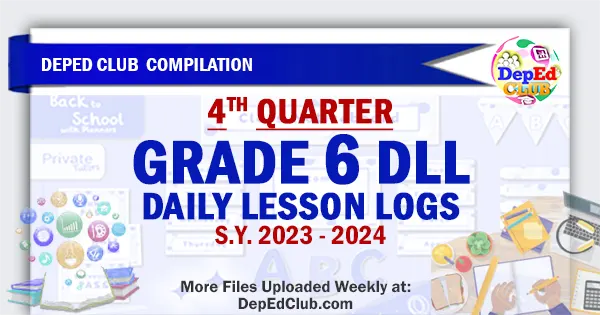To help teachers create engaging learning experiences that lead to positive outcomes for all students, we are constantly uploading our ready-made Week 7 – Quarter 4 Grade 6 Daily Lesson Log | May 13 – 17, 2024 DLL. Our long-term goal is to consistently update and publish our ready-made weekly Grade 6 Daily Lesson Logs. Just visit this page regularly for the latest uploads.
We are grateful to all of our Contributors, File Editors and Tech Volunteers who worked sacrificially and without hesitation to manage the content of our website and social media accounts. Thank you to everyone for your continued support.
Blended Learning
Blended learning strategies blend face-to-face interactions with technology, creating innovative learning experiences. Rather than focusing solely on technology, these strategies aim to solve learning experience challenges. Teachers play a crucial role in designing engaging activities that lead to desired learning outcomes. The key question becomes: “How can I create a learning environment that fosters engagement and achievement?”
By prioritizing the learning experience over technology, teachers engage in reflective practice to design effective blended learning. This approach challenges traditional teaching methods, encouraging teachers to explore how students learn best and utilize face-to-face interactions alongside technology. Ultimately, it aims to transform teaching practices and enable intellectual activities previously inaccessible without technology.
However, the potential of blended learning remains largely untapped due to ambiguous definitions and a techno-centric focus. Different interpretations of blended learning hinder its effective implementation and measurement of success. Moreover, definitions often prioritize technology over pedagogy, neglecting the essence of improving the learning experience.
To address these challenges, a new definition of blended learning is proposed emphasizing strategy, learner experience and tools. This definition shifts the focus from technology to pedagogy, laying a stronger foundation for effective practice. Drawing on constructivist principles and universal design for learning, a planning approach is suggested centered on pedagogical needs rather than technological tools.
In this approach, blended learning is viewed as a problem-solving exercise aimed at facilitating diverse learners’ achievement of intended outcomes. By integrating technology seamlessly with face-to-face methods, teachers can design learning activities that meet the needs of today’s society.
Unlocking the full potential of blended learning requires a shift in focus towards enhancing the learning experience. By adopting a pedagogically-driven approach and reimagining the role of technology, teachers can create transformative learning environments that cater to the diverse needs of learners.

